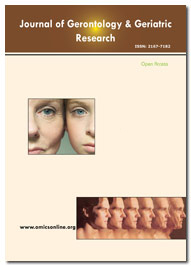Indiziert in
- Öffnen Sie das J-Tor
- Genamics JournalSeek
- SafetyLit
- RefSeek
- Hamdard-Universität
- EBSCO AZ
- OCLC – WorldCat
- Publons
- Genfer Stiftung für medizinische Ausbildung und Forschung
- Euro-Pub
- Google Scholar
Nützliche Links
Teile diese Seite
Zeitschriftenflyer

Open-Access-Zeitschriften
- Allgemeine Wissenschaft
- Biochemie
- Bioinformatik und Systembiologie
- Chemie
- Genetik und Molekularbiologie
- Immunologie und Mikrobiologie
- Klinische Wissenschaften
- Krankenpflege und Gesundheitsfürsorge
- Landwirtschaft und Aquakultur
- Lebensmittel & Ernährung
- Maschinenbau
- Materialwissenschaften
- Medizinische Wissenschaften
- Neurowissenschaften und Psychologie
- Pharmazeutische Wissenschaften
- Umweltwissenschaften
- Veterinärwissenschaften
- Wirtschaft & Management
Abstrakt
Prevalence and Impact of Anemia Among Elderly Population in Qatar: A Cross Sectional Study
Maryam Al Obaidely ,Navas Nadukkandiyil *,Mohammad Asim ,Fatima Abu Najma ,Hanadi Al Hamad ,Essa Al Sulaiti
Background: Anemia is a most common condition in the older population, and the prevalence of anemia increases with advanced age. The present study is conducted to estimate the prevalence of anemia in elderly population and to identify the potential predictive factors associated with the etiology and disease progression.
Methods: A retrospective chart review was conducted to include all geriatric patients (≥60 years) with anemia admitted at the geriatrics facilities (Rumailah hospital, skilled nursing facility and home healthcare services) in the state of Qatar between January 2013 and December 2013. Data include demographics, principle diagnosis, laboratory findings hemoglobin, hematocrit value, mean corpuscular volume (MCV), mean corpuscular hemoglobin (MCH), mean corpuscular hemoglobin concentration (MCHC), reticulocyte count, iron profile, serum folate, serum Creatinine other co-morbidities, medication, and assessment. Charlson’s comorbidity index, activity of daily living (ADL) and Bergs Balance Scoring level was compared with severity of anemia. Analysis was also performed for gender based on different age groups.
Results: Prevalence of anemia was analysed according to severity. A total of 522 elderly patients were found to be anemic with mean age of 78.2 ± 8.6 years; of which 66.7% were females. The majority of patients were Qatari nationals (79.7%).
The mean index hemoglobin level was 11.04 ± 1.6 and lowest hemoglobin level was 9.7 g/dl ± 1.6 g/dl. The severity of anemia was classified as mild deficiency (17.4%),
moderate (60.3%) and severe anemia (21.8%). The severity in the hemogram values among patients showed significant difference for hematocrit (p=0.001), serum Iron (p=0.001) and serum Ferritin (p=0.001). Co-morbidities such as chronic kidney disease (p=0.001), and Gastrointestinal bleeding (p=0.03) were also were higher in severe group. There was significant negative correlation between hemoglobin level and creatinine level (p=0.001) among elderly patients. Patients with severe anemia were more likely to receive clopidogril (p=0.01), H2 blocker (p=0.04) and calcium (p=0.01). Severe anemia was observed more in patients with advanced age (≥ 80 years) while, elderly <80 years suffered frequently with mild-to-moderate anemia. The common type of anemia was diagnosed as normocytic normochromic anemia (73.6%) than microcytic anemia (26.8%).
Conclusion: The present study identified a high prevalence of anemia among geriatric population in Qatar, with a higher frequency of comorbidities such as diabetes mellitus, hypertension and chronic kidney disease. An appropriate clinical approach is essential to treat anemia in elderly that can improve the quality of life and minimize the needs and costs of long-term healthcare facilities.